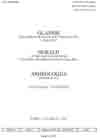Simbolizam pogrebne prakse tokom prekeramičkog neolita na Levantu i Anadoliji
The symbolism of mortuary practices in the Pre-Pottery Neolithic in the Levant and Anatolia
Author(s): Mustafa BaltićSubject(s): Archaeology
Published by: Zemaljski muzej Bosne i Hercegovine
Keywords: skull modelling; Neolithization; Levant; symbols of funerary rituals
Summary/Abstract: This paper is a postmodern critique of the theory of the impact of mortuary practices on Neolithization in the Near East. It offers a detailed theoretical consideration of secondary burials and the impact of ideology on the transformation of society from mobile hunter-gatherer to sedentary farming societies. One part of the symbolic aspect of life, the spiritual, burials and their associated rituals, forms the framework of the paper and the lens through which change and the first signs of the Neolithic can be observed. The conclusion reached is that Neolithization occurred initially in the world of symbols, and thereby of ideology, and that a key element of the new Neolithic ideology and cultural matrix was a new mortuary practice, a lengthy process involving the entire community, for which certain individuals were particularly responsible. The evolution of the mortuary practice of the Pre-Pottery Neolithic in the Levant and Anatolia at this time changed the ideological matrix of society, and constitutes one of the most important factors of Neolithization, successfully domesticating death at the symbolic level and creating cults that were crucial to the sedentary lifestyle. The domestication of death through funerary rituals proved to have initiated changes to the way of life that preceded changes to the economy.
Journal: Glasnik Zemaljskog muzeja Bosne i Hercegovine u Sarajevu: Arheologija
- Issue Year: 2012
- Issue No: 53
- Page Range: 7-34
- Page Count: 28
- Language: English

